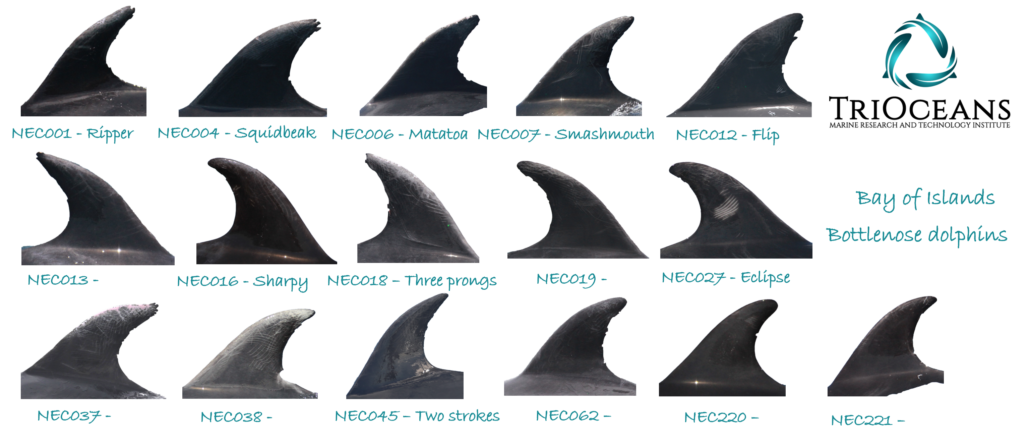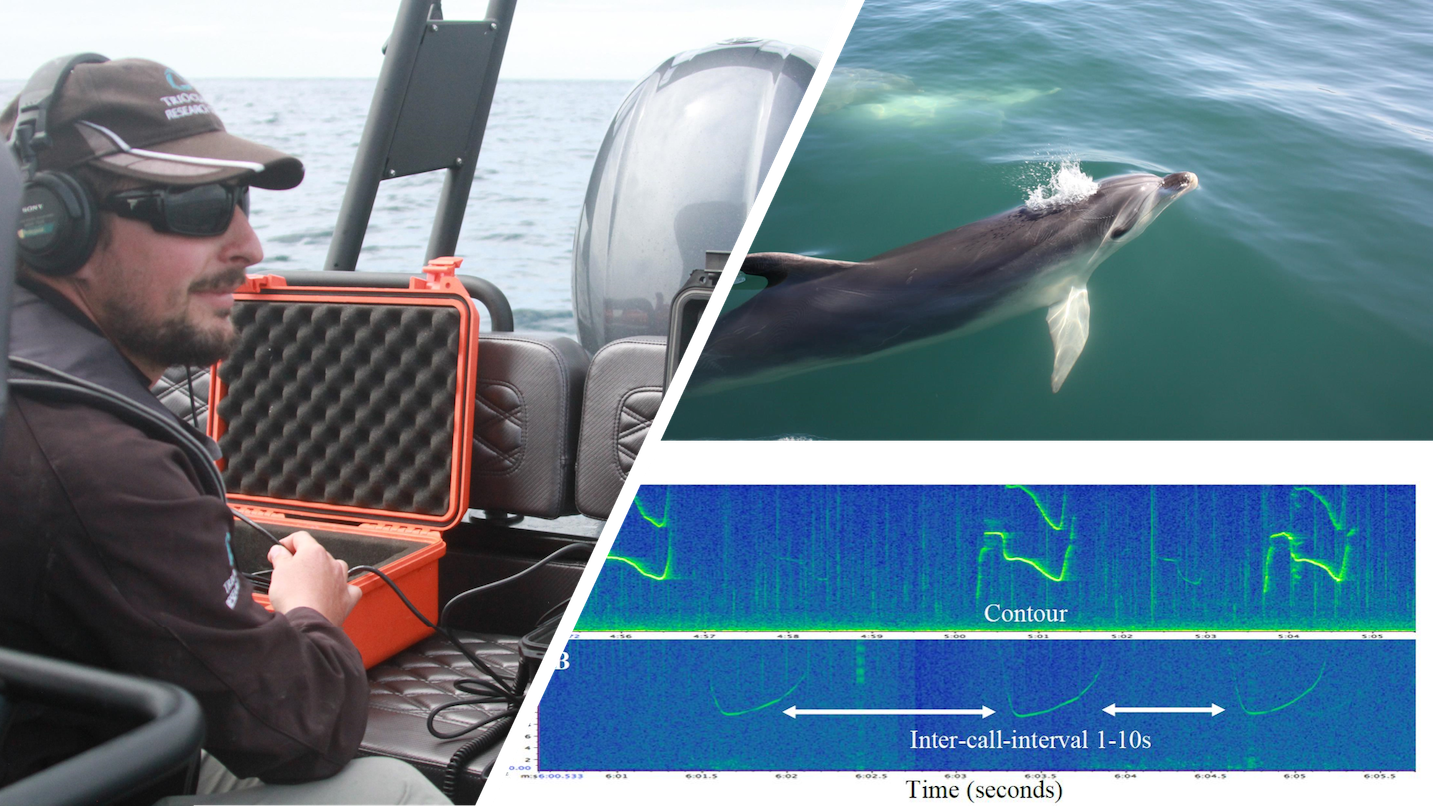Far North Waters bottlenose dolphin PhotoID catalogue
TriOceans has spent 8 years curating a photoID catalogue for bottlenose dolphin in Far North Waters and can track how the population parameters evolve.
PhotoID (short for photo identification) is used by researchers to track bottlenose dolphin movements, social networks and habitat preferences. Each fin is unique like a human fingerprint, enabling individual movements to be tracked with minimal disturbance.

 TriOceans
TriOceans

